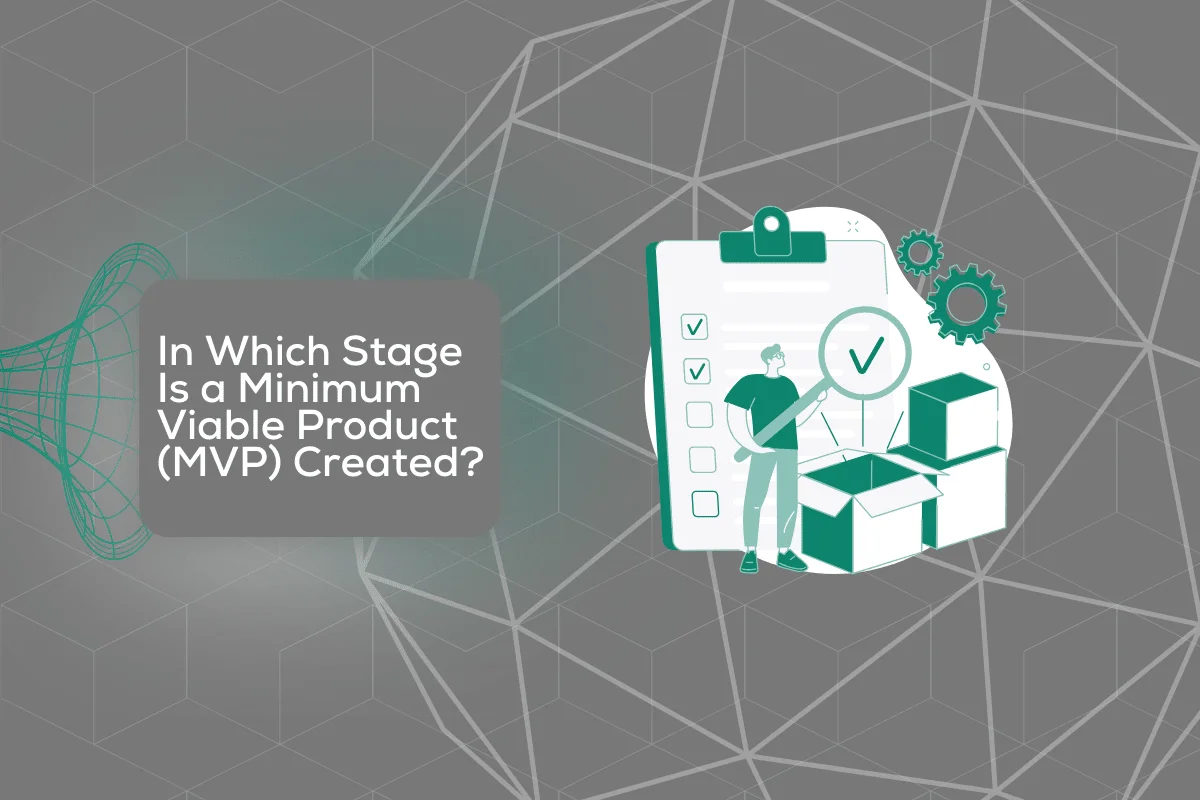A frequently asked question in the world of startups is in which stage is a minimum viable product (MVP) created. As we’ve explained before, an MVP is the first glimpse of a concept that ensures designers and developers validate learnings about customers and their needs. The core business idea is translated into a form with minimum features, which enables early adopters to provide feedback. But at what point do you need to launch it?
In Which Stage Is a Minimum Viable Product (MVP) Created?
MVPs are created and launched in the early stages of app or software development. However, there are significant steps that precede this stage, as well as some that follow it. MVPs bring startups a step closer to developing and launching a full-scale application or product that is marketable. It can be seen as a step that sets the stage for the final version, and that helps sort out issues, avoiding MVP mistakes in front of a larger pool of users.

Stages That Precede the Phase of Building an MVP
What needs to be made? How will it address the customer’s requirements? Is there a market for such an app or software? All of these questions need to be answered before MVPs are even considered, so let’s now explore in-depth steps that need to be taken before software or mobile app development.
#1 Market Research
Has your startup decided on the market niche to tackle? The most important thing is to know that there are potential customers for a business idea to flourish and become a reality. The easiest way to find out more about the future success of an idea is to do some market research. Determine the market size and target audience. Is there a demand for something you want to offer? During your research, check whether there is a solution already on the market for something you want to create an MVP for.
#2 Learn More About Your Competitors
Delve into the competitor’s products, strategies, and interactions with customers. Analyze their weaknesses and strengths. Determining gaps they have failed to cover might provide insight into what features could be added to your project. This will help with crafting an authentic selling proposition and distinguish your brand.

#3 Defining Features
How will you help consumers? What is the core feature? It’s time to narrow down the list of the most important MVP features. It’s best to abide by the MoSCoW strategy. Use three criteria – value, work involved, and risks to assess each feature:
- The value represents the significance the feature adds to the app.
- The work involved considers the time and resources needed for the vision to come to life.
- Risks capture the possible challenges in crafting the features.
#4 Creating a Prototype
Now that the outline of the concept is complete, developers need to test it out and ensure its feasibility. By creating a prototype through the process of software and hardware prototyping or rapid software development prototyping, the potential users can engage and visualize the product’s concept. At this stage, potential design flaws are seen, and initial feedback is gathered.
It’s essential not to confuse a prototype with an MVP. Here is a table that clarifies the distinction between prototypes vs MVPs.
| Type | Prototype | MVP |
|---|---|---|
| Aim | Visualize the business idea | Validate the concept and pinpoint the market |
| Time to develop | 2-3 weeks | Months |
| Audience | Investors and stakeholders | Investors and early adopters |
| Revenue | Not for sale | It is sold to early adopters |
| Risk assessment | Eliminates risks of customer dissatisfaction | Shows whether there are potential customers |
What Does MVP Development Process Entail?
After prototyping, the next step is finally MVP development. Prototypes help shape and form MVPs, so it shouldn’t be expected that teams start from scratch. This is the coding phase and the focus is on designing the core feature. After MVPs are launch-ready, they should be promoted to early adopters, and feedback should be collected. Building a minimum viable product can take from a month to half a year, depending on the complexity of the features. Trust a reliable app or software development company when investing in app development services.
The Next Step Is to Analyze the Feedback After Launching a Minimum Viable Product (MVP)
Once the MVPs get launched and in the hands of users, analyzing feedback becomes paramount. Surveys, user interviews, in-app prompts, and analytic tools need to be utilized. Qualitative data will help understand user preferences and behavior, while quantitative data can pinpoint the user needs that are still not met.

What Comes After MVP Launch for a Startup?
When a startup has usage data, adjustments can be made and additional features developed. There might be a new minimum viable product that will test other features, or the company might be able to deliver a full-featured project that has all functionalities. The trick is to always keep upgrading and building a foundation on UX.
We Have Great News – Juratech Helps Startups Develop Great MVPs
Navigating the complexities of MVP development is challenging, but that is exactly what we do at Juratech. With our expertise in backend web development, frontend web development, as well as mobile and desktop application development services, we make app development seamless. Our team is committed to turning a vision into a product that resonates with audiences. So, contact us and make your startup journey efficient.







